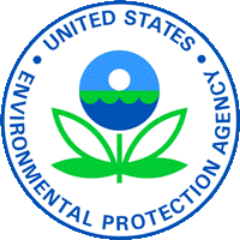Mock sample for your project: U.S. EPA Enforcement and Compliance History Online (ECHO) - Effluent Charting and Reporting API
Integrate with "U.S. EPA Enforcement and Compliance History Online (ECHO) - Effluent Charting and Reporting API" from epa.gov in no time with Mockoon's ready to use mock sample

U.S. EPA Enforcement and Compliance History Online (ECHO) - Effluent Charting and Reporting
Version: 2019.10.15
Integrate third-party APIs faster by using "U.S. EPA Enforcement and Compliance History Online (ECHO) - Effluent Charting and Reporting API" ready-to-use mock sample. Mocking this API will allow you to start working in no time. No more accounts to create, API keys to provision, accesses to configure, unplanned downtime, just work.
Improve your integration tests by mocking third-party APIs and cover more edge cases: slow response time, random failures, etc.
Description
Enforcement and Compliance History Online (ECHO) is a tool developed and maintained by EPA's Office of Enforcement and Compliance Assurance for public use.
ECHO provides integrated compliance and enforcement information for over 1 million regulated facilities nationwide.
EFF Rest Services provides the data for ECHO's Effluent Charts, a set of dynamic charts and tables of permitted effluent limits, releases, and violations over time for Clean Water Act (CWA) wastewater discharge permits issued under the National Pollutant Discharge Elimination System (NPDES).
See Effluent Charts Help (https://echo.epa.gov/help/reports/effluent-charts-help) for additional information.
\
The are 3 service end points for Effluent Charts: getsummarychart, geteffluentchart, and downloadeffluentchart.
\
1) Use getsummarychart to retrieve a summary matrix of effluent parameters by effluent outfall and an overall violation status for a provided NPDES Permit and date range.
2) Use geteffluentchart to retrieve detailed Discharge Limit, DMR and NPDES Violation information for a provided NPDES Permit, date range, effluent parameter, or outfall.
3) Use downloadeffluentchart to generate a Comma Separated Value (CSV) file of the detailed data provided with get_effluent chart, for a provided NPDES Permit, date range, effluent parameter, or outfall.
\
Additional ECHO Resources: Web Services, About ECHO's Data, Data Downloads
Other APIs by epa.gov

U.S. EPA Enforcement and Compliance History Online (ECHO) - Clean Air Act
Air Rest Services provides multiple service endpoints, each with specific capabilities, to search and retrieve data on facilities regulated under the Clean Air Act (CAA). The returned results reflect data drawn from EPA's ICIS-Air database.
The getfacilities, getmap, getqid, and getdownload end points are meant to be used together, while the enhanced getfacilityinfo end point is self contained.
The getfacilityinfo end point returns either an array of state, county or zip clusters with summary statistics per cluster or an array of facilities.
The recommended use scenario for getfacilities, getqid, getmap, and getdownoad is:
1) Use getfacilities to validate passed query parameters, obtain summary statistics and to obtain a queryid (QID). QIDs are time sensitive and will be valid for approximately 30 minutes.
2) Use get_qid, with the returned QID, to paginate through arrays of facility results.
3) Use get_map, with the returned QID, to zoom in/out and pan on the clustered and individual facility coordinates that meet the QID query criteria.
4) Use get_download, with the returned QID, to generate a Comma Separated Value (CSV) file of facility information that meets the QID query criteria.
Use the qcolumns parameter to customize your search results. Use the Metadata service endpoint for a list of available output objects, their Column Ids, and their definitions to help you build your customized output.
Additional ECHO Resources: Web Services, About ECHO's Data, Data Downloads

U.S. EPA Enforcement and Compliance History Online (ECHO) - Resource Conservation and Recovery Act
RCRA Rest Services provides multiple service endpoints, each with specific capabilities, to search and retrieve data on hazardous waste handlers/facilities regulated under the Resource Conservation and Recovery Act (RCRA). The returned results reflect data drawn from EPA's RCRAInfo database.
\
The getfacilities, getmap, getqid, and getdownload end points are meant to be used together, while the enhanced getfacilityinfo end point is self contained.
The getfacilityinfo end point returns either an array of state, county or zip clusters with summary statistics per cluster or an array of facilities.
\
The recommended use scenario for getfacilities, getqid, getmap, and getdownoad is:
\
1) Use getfacilities to validate passed query parameters, obtain summary statistics and to obtain a queryid (QID). QIDs are time sensitive and will be valid for approximately 30 minutes.
2) Use get_qid, with the returned QID, to paginate through arrays of facility results.
3) Use get_map, with the returned QID, to zoom in/out and pan on the clustered and individual facility coordinates that meet the QID query criteria.
4) Use get_download, with the returned QID, to generate a Comma Separated Value (CSV) file of facility information that meets the QID query criteria.
\
\
Use the qcolumns parameter to customize your search results. Use the Metadata service endpoint for a list of available output objects, their Column Ids, and their definitions to help you build your customized output.
\
Additional ECHO Resources: Web Services, About ECHO's Data, Data Downloads

U.S. EPA Enforcement and Compliance History Online (ECHO) - Enforcement Case Search
CASE Rest Services provide multiple service endpoints, each with specific capabilities, to search and retrieve data on civil cases entered into the
Integrated Compliance Information System (ICIS) and criminal cases entered into the Summary of Criminal Prosecutions database.
See Enforcement Case Search Help (https://echo.epa.gov/help/enforcement-case-search-help) for additional information on searching civil and criminal cases.
\
The getcases, getmap, getqid, and getdownload end points are meant to be used together, while the enhanced getcaseinfo end point is self contained..
The recommended use scenario for getcases, getqid, getmap, and getdownoad is:
\
1) Use getcases to validate passed query parameters, obtain summary statistics and to obtain a queryid (QID). QIDs are time sensitive and will be valid for approximately 30 minutes.
2) Use get_qid, with the returned QID, to paginate through arrays of case results.
3) Use get_map, with the returned QID, to zoom in/out and pan on the clustered and individual facility coordinates, related to the returned cases, that meet the QID query criteria.
4) Use get_download, with the returned QID, to generate a Comma Separated Value (CSV) file of facility information that meets the QID query criteria.
\
In addition to the service endpoints listed above there are two detailed case report services, one for civil cases (getcasereport) and one for criminal cases (getcrcasereport).
See the Civil Enforcement Case Report Help (https://echo.epa.gov/help/reports/enforcement-case-report-help) and the Criminal Case Report Help (https://echo.epa.gov/help/reports/criminal-case-report-help) for additional information
on then data returned from these two services.
\
Additional ECHO Resources: Web Services, About ECHO's Data, Data Downloads

U.S. EPA Enforcement and Compliance History Online (ECHO) - Safe Drinking Water Act
SDW Rest Services provides multiple service endpoints, each with specific capabilities, to search and retrieve data on public water systems regulated under the Safe Drinking Water Act (SDWA). The returned results reflect data drawn from EPA's Federal Safe Drinking Water Information System (SDWIS) database.
\
The getsystems, getqid, and get_download end points are meant to be used together.
\
The recommended use scenario for getsystems, getqid, and get_downoad is:
\
1) Use getsystems to validate passed query parameters, obtain summary statistics and to obtain a queryid (QID). QIDs are time sensitive and will be valid for approximately 30 minutes.
2) Use get_qid, with the returned QID, to paginate through arrays of water system results.
3) Use get_download, with the returned QID, to generate a Comma Separated Value (CSV) file of water system information that meets the QID query criteria.
\
\
Use the qcolumns parameter to customize your search results. Use the Metadata service endpoint for a list of available output objects, their Column Ids, and their definitions to help you build your customized output.
\
Additional ECHO Resources: Web Services, About ECHO's Data, Data Downloads

U.S. EPA Enforcement and Compliance History Online (ECHO) - Clean Water Act (CWA) Rest Services
CWA Rest Services provides multiple service endpoints, each with specific capabilities, to search and retrieve data on facilities regulated under the Clean Water Act (CWA) and managed under the National Pollutant Discharge Elimination System (NPDES) program. The returned results reflect data drawn from EPA's ICIS-NPDES database.
\
The getfacilities, getmap, getqid, and getdownload end points are meant to be used together, while the enhanced getfacilityinfo end point is self contained.
The getfacilityinfo end point returns either an array of state, county or zip clusters with summary statistics per cluster or an array of facilities.
\
The recommended use scenario for getfacilities, getqid, getmap, and getdownoad is:
\
1) Use getfacilities to validate passed query parameters, obtain summary statistics and to obtain a queryid (QID). QIDs are time sensitive and will be valid for approximately 30 minutes.
2) Use get_qid, with the returned QID, to paginate through arrays of facility results.
3) Use get_map, with the returned QID, to zoom in/out and pan on the clustered and individual facility coordinates that meet the QID query criteria.
4) Use get_download, with the returned QID, to generate a Comma Separated Value (CSV) file of facility information that meets the QID query criteria.
\
\
Use the qcolumns parameter to customize your search results. Use the Metadata service endpoint for a list of available output objects, their Column Ids, and their definitions to help you build your customized output.
\
Additional ECHO Resources: Web Services, About ECHO's Data, Data Downloads

U.S. EPA Enforcement and Compliance History Online (ECHO) - Detailed Facility Report (DFR)
DFR Rest Services provide multiple service endpoints, to retrieve detailed facility location, enforcement, compliance monitoring, and pollutant information for any single facility. See the Detailed Facility Report (DFR) Help Page (https://echo.epa.gov/help/reports/detailed-facility-report-help) for additional information on the DFR. Additionally, a Data Dictionary (https://echo.epa.gov/help/reports/dfr-data-dictionary) is also available.
There is one primary service end point, get_dfr, that provides all available DFR data. All other service end points that are exposed, will return data on a single section of the DFR.
\
Additional ECHO Resources: Web Services, About ECHO's Data, Data Downloads

U.S. EPA Enforcement and Compliance History Online (ECHO) - All Data
ECHO Rest Services provide multiple service endpoints, each with specific capabilities, to search and retrieve data on facilities regulated as Clean Air Act (CAA) stationary sources, Clean Water Act (CWA) dischargers, Resource Conservation and Recovery Act (RCRA) hazardous waste generators/handlers, and Safe Drinking Water Act (SDWA) public water systems. Data of interest from other EPA sources, such as the Toxics Release Inventory, is also supplied for context.
\
The getfacilities, getmap, getqid, and getdownload end points are meant to be used together, while the enhanced getfacilityinfo end point is self contained.
The getfacilityinfo end point returns either an array of state, county or zip clusters with summary statistics per cluster or an array of facilities.
\
The recommended use scenario for getfacilities, getqid, getmap, and getdownoad is:
\
1) Use getfacilities to validate passed query parameters, obtain summary statistics and to obtain a queryid (QID). QIDs are time sensitive and will be valid for approximately 30 minutes.
2) Use get_qid, with the returned QID, to paginate through arrays of facility results.
3) Use get_map, with the returned QID, to zoom in/out and pan on the clustered and individual facility coordinates that meet the QID query criteria.
4) Use get_download, with the returned QID, to generate a Comma Separated Value (CSV) file of facility information that meets the QID query criteria.
\
\
Use the qcolumns parameter to customize your search results. Use the Metadata service endpoint for a list of available output objects, their Column Ids, and their definitions to help you build your customized output.
\
Additional ECHO Resources: Web Services, About ECHO's Data, Data Downloads
Other APIs in the same category

Europeana Search & Record API
Ministry of Petroleum and Natural Gas(BPCL)
Common Service Centre (CSC)
Department of IT and BT, Karnataka
Transport Department, Assam
Board of Ayurvedic and Unani Systems of Medicine, Himachal Pradesh, Himachal Pradesh
Climate FieldView Platform APIs
All endpoints are only accessible via HTTPS.
All API endpoints are located at https://platform.climate.com (e.g.
https://platform.climate.com/v4/fields).
The authorization token endpoint is located at
https://api.climate.com/api/oauth/token.
Troubleshooting
X-Http-Request-Id response header will be returned on every call,
successful or not. If you experience an issue with our api and need
to contact technical support, please supply the value of the X-Http-Request-Id
header along with an approximate time of when the request was made.
Request Limits
When you’re onboarded to Climate’s API platform, your x-api-key is assigned a custom usage plan. Usage plans are unique to each partner and have the following key attributes:
Throttling information
burstLimit: Maximum rate limit over a period ranging from 1 second to a few seconds
rateLimit: A steady-state rate limit
Quota information
Limit: The maximum number of requests that can be made in a given month
When the request rate threshold is exceeded, a 429 response code is returned. Optionally, the Retry-After header may be returned:
Following are examples of rate limit errors:
Rate limit exceeded:
HTTP/1.1 429
Content-Type: application/json
Content-Length: 32
{"message":"Too Many Requests"}
Quota exhausted:
HTTP/1.1 429
Content-Type: application/json
Content-Length: 29
{"message":"Limit Exceeded"}
Pagination
Pagination is performed via headers. Any request which returns a "results"
array may be paginated. The following figure shows how query results are laid out with
X-Limit=4 and no filter applied.
If there are no results, a response code of 304 will be returned.
If the response is the last set of results, a response code of 200 or
206 will be returned.
If there are more results, a response code of 206 will be returned.
If X-Next-Token is provided in the request headers but the token has
expired, a response code of 409 will be returned. This is only applicable
for some endpoints; see specific endpoint documentation below.
X-Limit
The page size can be controlled with the X-Limit header. Valid values are
1-100 and defaults to 100.
X-Next-Token
If the results are paginated, a response header of X-Next-Token will be
returned. Use the associated value in the subsequent request (via the X-Next-Token
request header) to retrieve the next page. The following sequence diagram shows how to
use X-Next-Token to fetch all the records.
Chunked Uploads
Uploads larger than 5MiB (5242880 bytes) must be done in 5MiB chunks
(with the exception of the final chunk). Each chunk request MUST contain a
Content-Range header specifying the portion of the upload, and a Content-Type
header specifying binary content type (application/octet-stream). Range
uploads must be contiguous. The maximum upload size is capped at 500MiB (524288000 bytes).
Chunked Downloads
Downloads larger than 5MiB (5242880 bytes) must be done in 1-5MiB
chunks (with the exception of the final chunk, which may be less than 1MiB).
Each chunk request MUST contain a Range header specifying the requested portion of the download,
and an Accept header specifying binary and json content types (application/octet-stream,application/json)
or all content types (/).
Drivers
If you need drivers to process agronomic data, download the ADAPT plugin below. We only support the plugin in the Windows environment, minimum is Windows 7 SP1.
For asPlanted, asHarvested and asApplied data:
ADAPT Plugin
Release notes can be found here.
Download and use of the ADAPT plugin means that you agree to the EULA for use of the ADAPT plugin.
Please review the EULA (last updated on June 6th, 2019) before download and use of the ADAPT plugin.
For more information, please refer to:
ADAPT Resources
ADAPT Overview
ADAPT FAQ
ADAPT Videos
Sample Test Data
Sample agronomic data:
asPlanted and asHarvested data
asApplied data set 1
asApplied data set 2
To upload the sample data to your account, please follow the instructions in this link.
Sample soil data:
Sample soil data

U.S. EPA Enforcement and Compliance History Online (ECHO) - Detailed Facility Report (DFR)
DFR Rest Services provide multiple service endpoints, to retrieve detailed facility location, enforcement, compliance monitoring, and pollutant information for any single facility. See the Detailed Facility Report (DFR) Help Page (https://echo.epa.gov/help/reports/detailed-facility-report-help) for additional information on the DFR. Additionally, a Data Dictionary (https://echo.epa.gov/help/reports/dfr-data-dictionary) is also available.
There is one primary service end point, get_dfr, that provides all available DFR data. All other service end points that are exposed, will return data on a single section of the DFR.
\
Additional ECHO Resources: Web Services, About ECHO's Data, Data Downloads

College Football Data API
